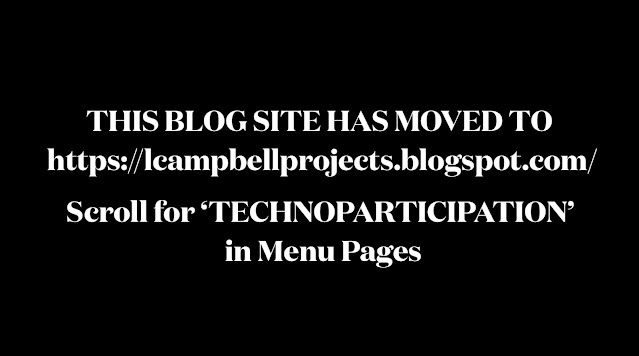DIGITAL PEDAGOGIES OPEN STUDIO
Thank you @Chri5rowell for including my research paper on digital pedagogy and disruption in latest issues of @ualspark
https://sparkjournal.arts.ac.uk/index.php/spark/article/view/167
#digitalstorytelling #digitalpedagogy #criticalpedagogy #technparticipation #technoempathy #online #disruption orytelling #performancepoetry #spokenword #liveart #performanceart
One of the latest iterations of the Technoparticipation is the online Digital Pedagogies Open Studio co-set up between myself, Richard Parry and Natasha Sabatini at the University of the Arts London, an online space accessible to both staff and students where personal approaches and personal narratives shed light on key questions/ pertinent themes relating to disruptions, interventions and liminalities.
The Digital Pedagogies Open Studio encourages digital criticality and creative learning potential via student engagement in digital technology where educational formats (tutorials, workshops, seminars and so on)are viewed as ‘performative events’ (Nunes 2006: 130–1) to help students develop as autonomous self-reflective thinkers and doers in a constantly evolving digital age. The Digital Pedagogy Open Studio replicates chance happenings and interruptions online and proposes that the dynamic connection between students in a co-creative environment can still function when flow is constantly interrupted by technological imperfections. Rather than airbrushing out glitches and technological disturbances, the online studio sees valuein not just reflecting upon technological imperfections such as momentary on-screen visual freezing but actually deliberately engineering these ‘interruptions’ to happen within teaching. Thinking through how the body may be configured/compromised when we are speaking/communicating online, moments when technology freezes momentarily online during teaching sessions are embraced as they bring in the materiality of the digital. The online studio also recognizes the weirdness when parties are attempting to look at each other but are synchronized, producing a ‘technological uncanny’.
It could be said that online working may be most attractive to those whose artistic practice directly concerns the digital and technological forms of making. Therefore, one of the ambitions of the studio moving forward is to attract a wide cohort of practitioners, who are engaged in physical forms of making, to really encourage contestation, deliberation and debate about what happens when we experience, for example, a painting, a sculpture, the artist’s live physical fleshy body in performance art online. We are keen to use the studio as a locus for discussions concerning what happens when we experience those physical entities through the digital/ through virtual presence and how this may affect viewer engagement? Is it altered? Is it compromised? How can the digital positively disrupt our ways of thinking around presence, encounter and engagement?




